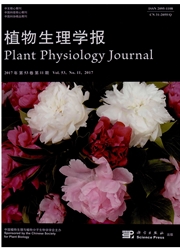

 中文摘要:
中文摘要:
本文试图从几种典型光合系统捕光天线的构造及传能效率的异同中揭示捕光天线在进化过程中遵循的物理法则。以绿硫菌(Chlorobium tepidum)、紫细菌(Rhodobacter sphaeroides)和高等植物的捕光天线为例,力图从低等光合系统的由单纯提高色素捕光效率的单向调节进化到高等植物的捕光效率与光保护的双向调节,揭示捕光天线为适应环境所采用的演化策略。在详细描述传统的光合捕光系统的F?rster传能模型和最近提出的相干传能模型的基础上,阐明捕光天线的功能及传能效率,进而说明光合传能过程中蛋白质参与调节的重要性。
 英文摘要:
英文摘要:
In this review, we attempt to reveal the role of physical rules played in the evolution of the photosyn- thetic light harvesting antenna based on the structure and energy transfer efficiency of several typical light har- vesting systems from bacteria to higher plants. In light of the fact that the evolution of the light harvesting an- tenna of the most primitive photosynthetic bacteria has been driven by a sole desire of increasing the efficiency of light collection and energy transfer, and those of the higher plants by double purposes of both energy transfer efficiency and the light protection, we try to elucidate the evolution strategies of light harvesting antenna adapt- ed to the environment. Then with brief description of the Forster energy transfer model and coherence energy transfer model, we describe the function and energy transfer efficiency of the light harvesting antenna based on their structures. Furthermore, the importance of protein in switching between different functions of the antenna has also been addressed.
 同期刊论文项目
同期刊论文项目
 同项目期刊论文
同项目期刊论文
 期刊信息
期刊信息
